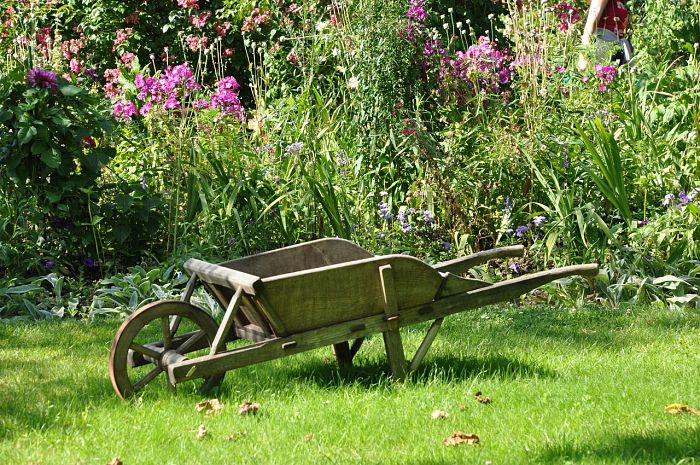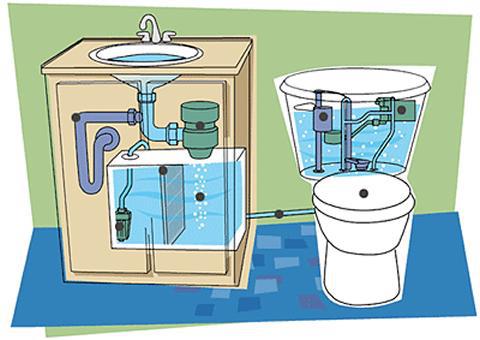If everything is green and blooming in your garden, you could enjoy the fruits of your labor if it weren’t for the pesky weeds. Unfortunately, there is no garden without weeds. These plants are often very strong during their growth, which often makes them difficult to remove. One or another home remedy can be very useful to combat these weeds.
Home remedies to kill weeds
Only when you know which weed you are dealing with can you take specific action against it. For example, if it’s a seed-propagated plant, it’s important to prevent it from spreading early. If the plant has a large root, it must be removed, not just cut off.
Otherwise, the weeds will sprout again shortly after the plant has been uprooted. We recommend working consistently with manual labor and any use of chemicals in the garden is discouraged. Because here the whole environment and ornamental plants are usually affected.
1. Vinegar and salt to kill weeds
Many people use salt and vinegar or vinegar cleaner when it comes to weed control. For this, a mixture of one part of salt and five parts of hot water is made, which are then poured over the weeds. The salt contained in the water removes the liquid from the weeds so that they dry out and finally die.
After about a week, the treated plants wilt and can be removed. To make a vinegar solution, mix 15 parts water with one part vinegar and spray the mixture over the weeds. Often times, commercial vinegar cleaner is also added directly to the plants, after which they die.
The use of household products such as salt and vinegar or vinegar cleaner can be very effective, but should be used with caution, as they are products that can be harmful to the floor.
This is because there is an increase in the concentration of these substances in the soil, which, if so, can be reduced only with difficulty and over a very long period of time. Vinegar acidifies the soil, while salt increases salinity in the soil to kill microorganisms living in the soil, and its effects soon affect surrounding crops and ornamental plants as well.
Additionally, groundwater becomes contaminated, which in turn leads to problems in sewers and wastewater treatment plants. While it is relatively convenient to use vinegar or salt to control weeds, it should be avoided if possible, as there are other alternatives or home remedies that can sustainably kill weeds and pose no danger to humans or the environment.
2. Pull out weeds
The best and most promising method of thoroughly and permanently destroying weeds is regular weeding. However, depending on the nature of the weeds, this can take a lot of time and energy, but is much more environmentally friendly than salt and vinegar. It is better to start weeding at the beginning of the year, so that the number of weeds is limited later. You should know that there are herbs from seeds and roots.
Seed herbs include, for example, shepherd’s purse, goose thistle, sour clover, and knuckle. Root weeds such as bishop’s weed, thistles, field horsetail, dandelion, white clover, Günsel, and nettles are much more persistent. They form dense nests or underground roots that invade the soil, making it difficult to permanently remove them.
Seed weeds have a fairly weak root system. and they must be plucked before flowering. This prevents the formation of seeds and the spread of these plants.
When removing weeds, the soil should be wet or damp. Moist soil is easier to work with and weeds can be better removed.
Root weeds are more difficult to remove, this is due to their dense root webs. From root weeds the entire root should always be removed, as any remaining root debris in the soil can grow back.
Loosen up the wet soil with a garden claw or hoe, wet the dry soil beforehand, then grab the plant just above the soil and gently scoop it out. Under no circumstances should you tear off the external parts of the plant.
Remove deeper rooted weeds with a root cutter, place the root cutter in the soil next to the plant and shake it several times. If the soil is loose, gently pull the weeds out along with the roots.
Removing plantain, bishop weed, nettles, and thistles is difficult. Permanent removal of these weeds is only possible by digging large areas.
Non-flowering weeds can remain in the soil in sunlight, causing them to dry out, decompose, and return to the soil as organic matter. Even if you continue with this type of care, this is no guarantee that undesirable weed growth will not occur again next year. However, it should be significantly lower.
Tip: The most important thing when pulling weeds is a careful approach. The fewer root debris left in the ground; the less weeds can grow back.
3. Potato water for weeds
Another recommended home remedy for weeds of any kind is unsalted potato, rice or pasta water. Its effectiveness is based on the starch contained in the cooking water. There is nothing to consider during the application, just pour the hot water over the plants. The starch clogs the so-called stomata (pores in the lower epidermis of plants) from dying. Presumably, even pure boiling water without starch would have a similar effect.
The remains of the dead plant just have to be uprooted. However, all of this is not very sustainable and must also be repeated regularly. Furthermore, water consumption can be relatively high depending on the area to be treated. This home remedy can be used where there are no other plants, for example, flowers, vegetables, or ornamental shrubs. It is particularly effective on cobblestones and corners, but with caution, on sensitive surfaces, hot water can cause damage. Therefore, it is best to always test in a location that is not immediately visible.
Tip: Adding mild soap to this starchy water can increase its effect.
4. Nettle liquid manure
Those who own a garden generally also have nettles, which can be used as a very effective and versatile natural remedy against weeds. It can not only produce a good fertilizer and effective sprayer to kill aphids and whiteflies. Various types of herbs can be fought with a mixture of these plants, which actually also belong to weeds. This manure is very easy to manufacture.
- You will need about 1 kg of fresh nettles, 10 liters of water and a large container.
- Coarsely chop the nettles, place them in the container, and fill it with water.
- Then cover the container.
- Let it ferment in a sunny place for about two weeks.
- Fermentation produces a very unpleasant smell.
- On the other hand, it helps to mix rock meal when making manure.
- Rock flour neutralizes unpleasant odors.
- It is enough to apply around 500 gr of rock flour.
- Mix the dough once a day.
- After about two weeks, the manure will be ready.
- It can be applied on unwanted herbs.
- Best administered undiluted.
- Although it is still very effective in diluted form.
Pour or spray the manure directly onto the weed leaves. The contained acid burns the leaves and damages the plants so much that they eventually die. To combat them or eliminate them permanently, the treatment must be repeated several times.
Tip: When using nettle manure, garden owners with their own garden or drinking water wells should be careful not to spread the mixture within a radius of approximately 10 m around the wells. Otherwise, foreign substances could enter the water and contaminate it.
5. Burn the plants
Another non-toxic and ecological home remedy for weed control is the gas burner with which you can burn the plants. Due to high temperatures, proteins clot in plant cells. In this way, above all, the parts of the plants above the ground can be eliminated. However, most of the roots are saved and disappear after a while, so everything must be repeated regularly.
This weed control method is only applicable to paved areas, such as decks, driveways, and sidewalks. For implementation, a dry and windless day should be chosen and the area in question should first be cleaned of dry branches and leaves with a broom. After flaming, the charred remains can be removed with a broom.
6. Pressure washer
If available, a high-pressure cleaner can be a very effective tool for fighting weeds. Its use is especially on sealed surfaces, with a high-pressure cleaner that is particularly suitable for removing moss covers. But even weeds can be removed or rinsed it. However, weeds must be thoroughly rinsed, so they must be filled with suitable material.
You have to rinse the weeds several times with the jet of water. To avoid excessive rinsing, the angle of impact of the water should be approximately 45 degrees. Then we can easily pull the weeds out with slightly longer and stronger roots.
Smaller grasses have usually already been slashed. This form of weed removal generally only makes sense if you are in possession of a high-pressure cleaner, and you don’t have to buy or borrow it.
7. Baking soda for weeds
Like salt and vinegar, baking soda is also found in every home, where it works in many ways. Therefore, it is also a good home remedy for weed growth and without any side effects.
It is administered through irrigation water. Mix 2-3 sachets of baking soda with 5 liters of water. To enhance the effect, choose a sunny day. The water evaporates and the baking soda can do its job. The application must be repeated several times until lasting success occurs.
8. Cover weeds with aluminum foil
Light and sun are essential for plant growth, this also applies to weeds. If you interrupt the light supply, photosynthesis no longer takes place, they can no longer grow and eventually die. A home remedy that is more suitable for this purpose is aluminum foil, a perfect alternative to chemical herbicides.
- The sheet should be dark and opaque.
- Cut the paper to the correct size first.
- Then put it on the weeds.
- Weeds must be completely covered with this sheet.
- They are secured in different places with stones or earth.
- Completely cover the outer edge with soil.
Now the sheet should stay as long as possible, because even though after about two weeks the first weed has died, the area is far from being weed free. As a general rule of thumb, the best results are only achieved if the area is fully covered and allowed to rest for at least 1-1.5 years. After this time, you remove all the roots, so that you can re-sow in this space.
Tip: This form of weeding is better suited to surfaces that you cannot use for some time, because the best results are obtained after a longer period of time.
9. Prevent weed growth
To prevent weeds from growing, or at least to keep them to a minimum, prevention is the best and most effective means of avoiding weed problems. Therefore, you can, for example, include a weed protection fabric in the area where you are planting.
Another preventive measure is the application of a thick layer of bark mulch or wood chips, which inhibits weed formation.
However, mulch has the property of depriving the soil of nutrients, especially nitrogen, which must then be returned with proper fertilization. Even ground-covering plants such as winter creeper, pachysandra, or epimedium can inhibit or even prevent weed growth.
On sidewalks and terraces their appearance can be prevented by regular sweeping, so young shoots are repeatedly removed. Flowers can be protected by positioning them on an edge, for example.
When getting rid of weeds, you should be careful to ensure that root weeds are added to the compost only when their roots are completely dry and cannot grow back. The seeds should be disposed of with the household garbage and not on the compost. Home remedies like salt and vinegar can be safely dispensed.








